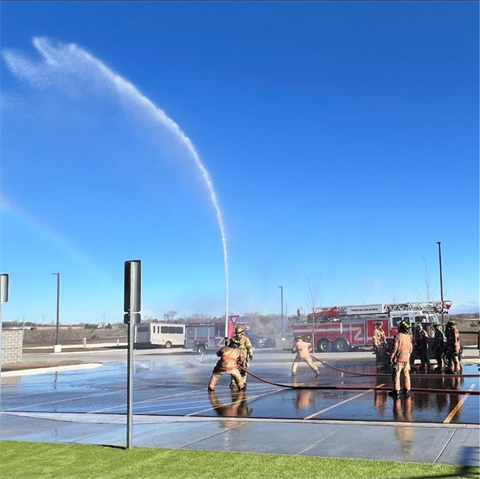About Sioux Falls Fire Rescue

Sioux Falls is a great community to live and raise a family. We consider our fire stations part of the neighborhood. Sioux Falls Fire Rescue is a nationally accredited department.
As one of the largest fire departments in the upper Midwest, we are committed to the safety of Sioux Falls. We do more than fight fires, as emergency medical calls now make up more than half of our emergency responses. We also have one of the larger Public Access Defibrillator programs in the country, and regularly provide CPR classes.
Sioux Falls Fire Rescue was presented with an ISO Class 1 designation in November of 2015, which is only given to fire departments in the United States that meet the highest standards of response capabilities.
What Makes an Ideal Firefighter Candidate?
Sioux Falls has continued to thrive by embracing and celebrating the many cultures that make up the fabric of Sioux Falls. Like the community, Sioux Falls Fire Rescue values a team that represents the community and comes from diverse backgrounds. We believe that different backgrounds and work experiences bring different strengths and skillsets to the team. Most importantly, our firefighters have a heart for service and are coachable.
City of Sioux Falls Firefighter Benefits
What does a shift with SFFR look like?
Firefighters report to work at 8:00 AM and work 24-hour shifts until the following morning. At the beginning of each shift, personnel place their personal protective equipment (PPE) on their assigned apparatus and receive a debrief about the previous day from firefighters who are clocking out from their shift. You are responsible for knowing the location of all equipment on each apparatus or truck and its proper use. A thorough truck check is completed to ensure all equipment is operational and prepared to respond to calls.
Crews begin their day by completing station cleaning duties. Daily cleaning duties include restrooms, bedrooms, apparatus bay, physical training room, classrooms, etc. Additionally, seasonal responsibilities include lawn care and snow removal. Fire stations are our home away from home, and we take pride in that responsibility. A meal plan will be created for the day, and groceries will be purchased each morning. Firefighters buy their own food or divide the cost amongst the crew if making a meal together. Some crews plan out a meal that they make together, while other crews may plan separate meals.
The shift will have an incident action plan for the events that day. The schedule for the day is always subject to change, as the need to respond to emergencies will take priority. Your crew must be prepared to respond and remain adaptable to respond to calls anytime throughout the 24-hour shift.
Crews will use time in the morning and afternoon to train on skills and tasks, such as fire suppression or emergency medical services (EMS). This training takes place in various forms, as it can be conducted in the station, at acquired structures across the City, or at the Fire Training Center. The Training Center Staff schedules mandatory drills and classes throughout the year. The training you receive in the Cadet Academy is the minimum standard, and it is vital to embrace day-to-day training once you are on shift.
When crews are not responding to calls or completing training, many business hours are spent conducting Community Risk Reduction (CRR) events, surveying commercial buildings, territory familiarization, or completing assignments in stations pertaining to equipment maintenance and repair. At least one hour of physical training is required each day.
Studying and professional development are imperative to readiness. Free time or evenings is reserved for self-study and administrative duties. You will have a test at the end of each year of employment for your first three years, and also have the opportunity to test for Fire Apparatus Operator (FAO) after three years of service.